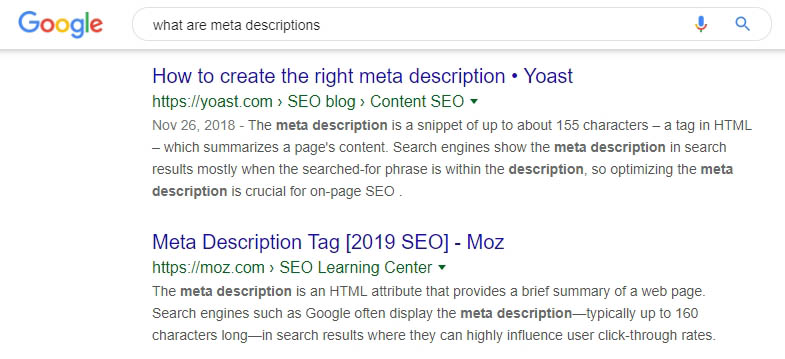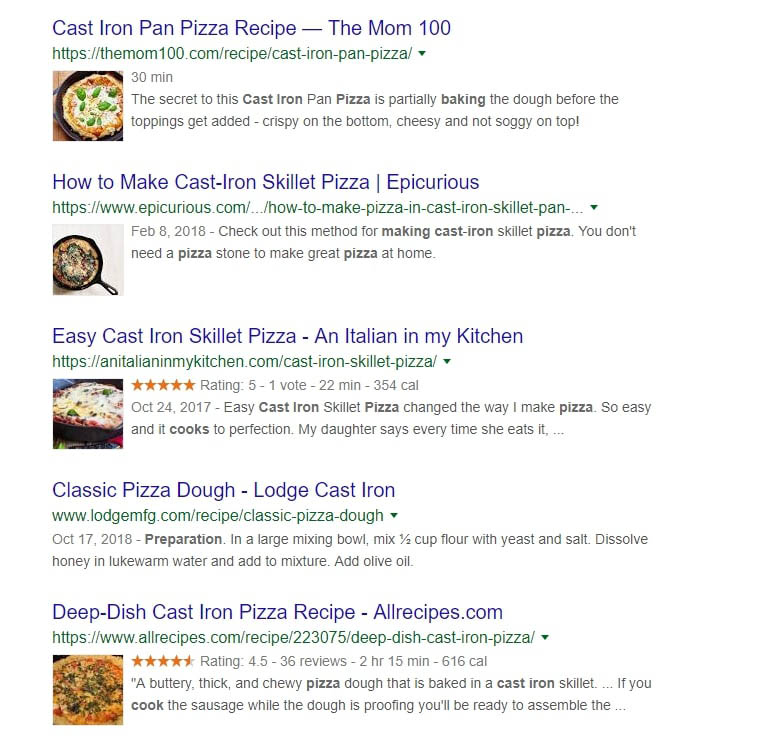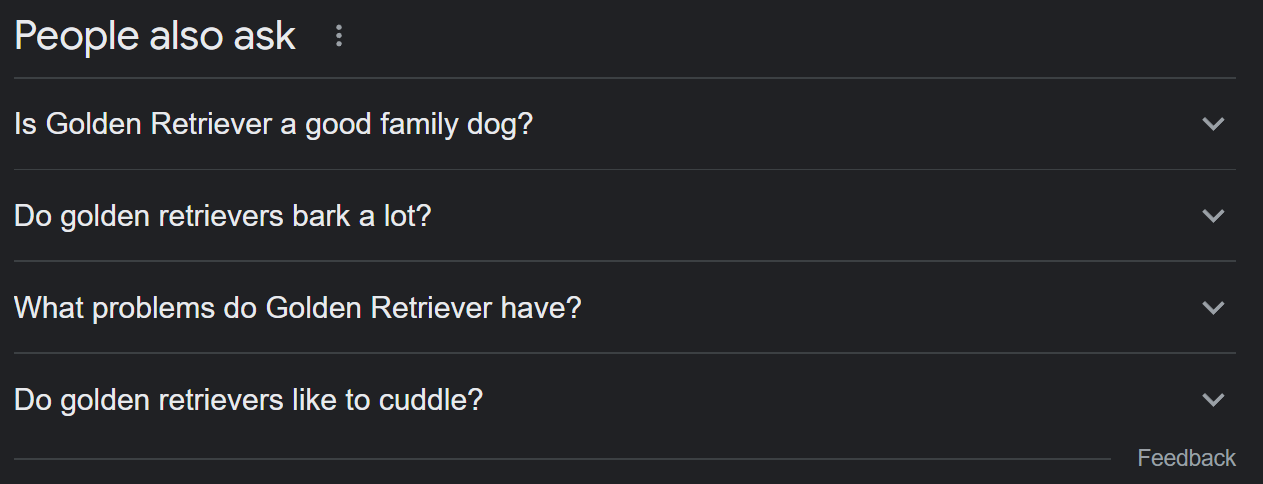Strong Search Engine Optimization (SEO) fundamentals are essential if you want to get your content to be found organically in search engines. However, despite all of our efforts to cater to Google’s robots, we still need to ensure we’re paying special attention to the human element.
Fortunately, a well-written meta description can catch readers’ attention and convince them that your content will answer their questions, and is worth their time. In turn, it can increase your site’s organic click-through rate (CTR) and help tell Google your page is valuable.
In this post, we’ll introduce you to meta descriptions and their importance to your website. Then, we’ll share some important tips to help you write better meta descriptions and supercharge your organic CTR. Let’s get started!
An Introduction to Meta Descriptions
Meta descriptions are the snippets of text you see underneath the title within Search Engine Results Pages (SERPs), as seen the example below:

The main goal of a good meta description is to give readers an idea of what the web page is all about. Naturally, titles also play a vital role here, but there’s only so much information you can fit into a single headline.
Meta descriptions provide up to a couple of sentences to expand on your page’s content. You can either write them yourself or have search engines generate them automatically based on your web page’s content.
As convenient as having search engines do the work for you might sound, we strongly recommend that you write your own meta descriptions. That way, you get full control over what shows up on the SERPs and social media sites while also increasing your chances of engaging users.
Let’s take a look at some meta description examples for a specific line of shoes. You can tell the meta description below was generated automatically, and it doesn’t give you much to go on:

Here’s another result for the same product search, this one using a stronger meta description:

It’s important to understand that meta descriptions only give you a limited number of characters to play with. On desktops, that can be up to 160 characters, whereas mobile users will only see 120 of them. Roughly speaking, that means you get about two lines of text.
Why Meta Descriptions Are Important
SEO is all about relevance. In order to rank, you first need to produce high quality content designed to answer a specific question or cover a topic thoroughly and accurately. Beyond that, there are a whole bunch of SEO best practices, tips, and tricks that can help you rank better.
Some of these Google has put into a category their algorithm uses to help them rank content in Search, referred to as “ranking factors.” There are over 200, in fact. Various examples include keyword usage, meta data, media usage in content, backlinks, and engagement.
While meta descriptions themselves are not a “ranking factor” — in that they don’t directly influence the rankings of your pages — they can indirectly help you by encouraging real human searchers to click on your results, thus signaling higher user engagement and potentially influencing your search position.
What to Include in a Meta Description
Two lines of text isn’t much, but more often than not, it’s enough to cover a few key elements. Most often, this should include:
- What your page is about
- How it can benefit the reader
If a meta description is too vague, then you’re not selling users on the idea of visiting your website. You’ll probably still get clicks, of course, but not as many as you might have otherwise.
Let’s say, for example, that you wanted to write a meta description for this article you are reading right here. Here’s, maybe, a not-so-good example:
Have you ever wondered what meta descriptions are? Wonder no more, because we’ll tell you everything you need to know.
While it hits on the article’s primary topic, it doesn’t do a good job of previewing the page’s actual content. Now let’s give it another go, keeping in mind the fundamental elements we want to include:
Meta descriptions convey what your web page is all about and can indirectly influence rankings. Find out how to write the perfect meta description here.
This is short and to the point, and we even had enough characters left over to include a simple Call to Action (CTA). It may not win any literary awards, but it will get the job done.
How to Write the Perfect Meta Description (10 Key Tips)
At this point, you know the basics of what a meta description should include. Now here are 10 tips that will help you really knock your meta descriptions out of the park.
1. Use Relevant Keywords
If you’re reading this, you’re probably familiar with the concept of keywords. Ideally, you’ll use key phrases organically throughout all of your content, including in metadata such as your descriptions.
Let’s say, for example, that you’re writing a recipe and you want to optimize it for the search term “how to cook a healthy lasagna”. That’s an easy term to work into a meta description:
Learning how to cook a healthy lasagna is easier than you might imagine. Let’s go over a recipe you can cook in under two hours!
Including keywords within your meta descriptions is an SEO best practice. It gives search engines a better idea of what your content is all about.
However, as always, make sure to work those meta keywords in organically. That means not stuffing your descriptions full of keywords.
In fact, Google advises against using long lists of keywords in your meta descriptions. So, you’ll want to make sure your description still reads like something a human (not a bot) would write.
2. Consider Meta Description Character Count
So far, most of the examples we’ve shown you have come in well under the maximum character count for the major search engines. You want to get some mileage out of your meta descriptions. However, in practice, obsessing over the character count isn’t as serious as you might think.
To build on our earlier example of a healthy lasagna recipe, you could easily expand on its description to cover more information:
Learning how to cook a healthy lasagna is easier than you might imagine. For this recipe, we’re substituting meat with eggplants, which means it will cook faster and feed up to four people.
That example goes over the character limit for both desktop and mobile meta descriptions in Google. In practice, it would get cut off and look something like this:
Learning how to cook a healthy lasagna is easier than you might imagine. For this recipe, we’re substituting meat with eggplants, which means it will cook …
That snippet still provides plenty of information, so you don’t necessarily need to change it. What matters is that you include the essential details early on, so whatever does get cut off is just supplementary information.
You’ll also want to keep in mind that Google recommends against very short meta descriptions. Although it’s great to be concise, a one-sentence description is unlikely to contain enough information to make readers click through.
3. Create Unique Meta Descriptions
When it comes to meta descriptions, there are two kinds of potential duplicates. It’s good practice to avoid both of them:
- Mimicking other sites’ descriptions
- Having several of your pages use the same description
Overall, duplicate content is almost always bad news when it comes to SEO. Moreover, it can hurt your CTR if you have several pages competing for the same search terms. For this reason, Google recommends against repurposing the same meta description for different pages or posts.
For practical purposes, there’s no reason all of your pages shouldn’t have unique meta descriptions. If it takes you more than a few minutes to write one, then you’re probably overthinking it.
Get Content Delivered Straight to Your Inbox
Subscribe to our blog and receive great content just like this delivered straight to your inbox.
4. Write Compelling Copy
Most meta descriptions are pretty boring, at least linguistically speaking. The need to cover so much information in such a limited space doesn’t lend itself well to innovation.
One way to make your meta descriptions stand out is by using compelling language. To do that, take a look at what other websites are writing for the keywords you want to rank for. Let’s say, for example, that you’re looking for a cast iron pizza recipe.
A lot of the content will be similar, which means their meta descriptions will share elements as well. However, not all descriptions are equally effective:

Some of our favorite hits from the above example include the words “crispy”, “buttery”, and “chewy”. There are five results here, but the first and last stand out due to their word choices.
Think about it this way — if you’re staring at that page trying to decide which recipe to follow, you’ll probably pick the one that sounds more delicious. At that stage, you don’t know how good the recipe will be, so your only indicators are the title tag, picture, and word choice in the meta description.
5. Be Specific and Concise
A vague meta description is unlikely to get many click-throughs. If a reader doesn’t know what to expect from the outset, there’s little motivation for them to spend the effort visiting your page and reading your content.
Although a meta description is short, you can pack details into it by being picky with your words. Using precise language can communicate the gist of your content without running over the character count.
Google provides this example of a highly specific meta description for a product page:

When writing a meta description for a blog post, you might include a quick summary of its headings so that readers have a detailed overview of the content:

Alternatively, you might summarize one of the key points from your article in your meta description. The exact approach will depend on the nature of your post and what information is most relevant to readers.
6. Make Your Meta Description Actionable
Simply writing a statement summary of your blog post can tell potential readers what it’s about. However, it could come across as generic and even boring if you don’t add a little excitement to your meta description.
You can address this by making your meta description actionable. This means prompting the reader to actually do something when they click on the headline and go to your article.
In the following meta description example, the website engages readers by encouraging them to “try these tips”, while also explaining the benefits of the article:

Using a CTA in your meta description can catch a reader’s attention when they’re scanning the search engine results. It can also tell them a little more about what they should expect to learn from your content.
There are a couple of ways to make your meta description actionable. You can include a direct CTA at the end of it, like in the example above. Alternatively, you might use active voice throughout to excite the reader and incentivize them to click through:

Both approaches are valid and can be effective for attracting readers to your site, so it’s a matter of preference. However, in all cases, we recommend staying away from passive language as much as possible.
7. Consider Your Target Audience
It’s also essential to consider your target audience when writing meta descriptions for your content. This is the group of people that typically read your blog or would benefit most from your content.
It might seem like writing a more generic meta description will ensure your content appeals to more people. However, this approach is often counterproductive. That’s because opting for a bland meta description means you might miss out on attracting readers who will better connect with your content.
One of the easiest ways to target your ideal audience is by thinking carefully about the tone of your meta description. For example, it could be a good idea to incorporate some humor and casual language if your target reader is Gen Z:

Alternatively, a more serious and to-the-point description with formal language could be more appropriate if your content is targeted toward older professionals.
8. Appeal to Emotion
It’s also a good idea to appeal to emotion in your meta descriptions. This approach can involve targeting a positive emotion, such as a reader’s excitement, or a negative pain point, like fear or trepidation.
Targeting emotions within your meta descriptions can be highly effective because it plays on readers’ psychological triggers. In fact, studies show that most people make emotional decisions when choosing brands or buying products.
If you choose to target a positive emotion within your meta descriptions, consider using exciting words to make readers feel more invested in your content. Here’s an example:
Asking for a promotion can supercharge your career and earn your employer’s respect. Learn how to ask for and actually get a promotion!
The same approach can also work for negative emotions:
Are you worried about what will happen to your family after you pass away? Check out our life insurance policies and find the best plan for you!
In both scenarios, using a question at the start of the meta description can immediately tap into the reader’s state of mind. We’ll explore this a little more in the next tip.
9. Answer a Specific Question or Concern
Most people use search engines to answer a question they have in mind. You can see this in action with the People also ask section in Google search results:

Although there aren’t enough words in a meta description to answer a potential question, you can target search intent. This refers to the reason why a user is making a particular search online.
Targeting search intent can convince readers that your post won’t be a waste of their time. By immediately bringing up the reason they’re searching in the first place, you can assure readers that the rest of your content will provide value.
You can address search intent by posing a question within your meta description or outlining a concern the reader might have. For example, if you’re teaching readers how to create an online store, your meta description might look like this:
Are you looking to turn your passion into a business and make money online? Check out our complete guide to creating an online store!
Since search intent goes hand in hand with keyword research, you’ll want to consider it when planning and writing your post. Then, you can provide a concise and exciting invitation to keep reading within your meta description.
Supercharge Your Organic CTR with Strong Meta Descriptions
When you boil it down, SEO is very competitive. You’ll never be the only website within a niche, so you’ll need to look for ways to make your pages stand out in the SERPs. Fortunately, an informative and unique meta description is a great way to catch potential visitors’ eyes.
There are a few ways to write a perfect meta description. You can include keywords and leverage interesting language. We also recommend being as specific and detailed as possible, using emotional vocabulary and phrases that will appeal to your target audience.
Are you looking to maximize your reach and get new eyes on your site? Our Dreamhost SEO marketing services can help you optimize your existing content, create new posts for your website, and provide monthly reports to track your progress. Check out our SEO plans today!
Search Engine Optimization Made Easy
We take the guesswork (and actual work) out of growing your website traffic with SEO.

The post How to Write the Perfect Meta Description & Supercharge Your Organic Click-Through Rate appeared first on Website Guides, Tips & Knowledge.
source https://www.dreamhost.com/blog/write-the-perfect-meta-description/

No comments:
Post a Comment